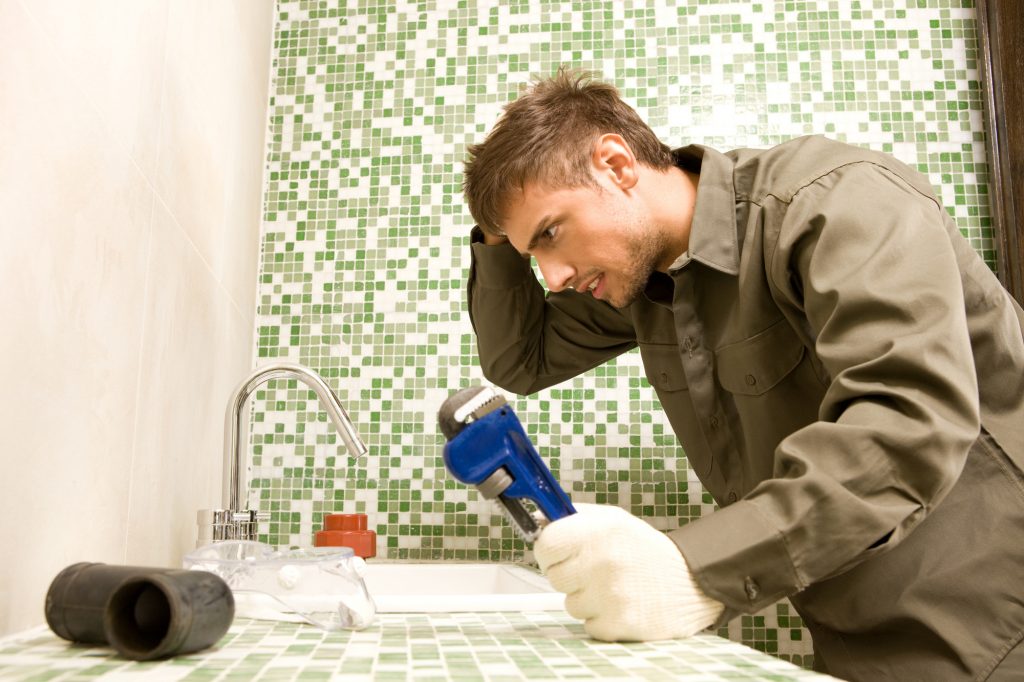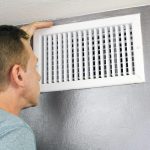The 9 Most Common Plumbing Problems and How to Fix Them
Plumbing disasters have become a thing of folklore on our TV sitcoms. The shower breaks, a gloating man tries to fix it, there’s a clanging sound, water shoots into his face, then someone calls the plumber.
Tim the Tool Man blew up a bathroom on his own TV show and cut to commercial. Claire Huxtable had to remedy Cliff’s shower catastrophe with an emergency call to the plumber, a fix that can cost over $250 per hour.
There’s good reason to be to be cautious when home improvement is concerned, but many of today’s homeowners aren’t confident enough to fix even minor house problems. Only 10% of homeowners feel like they have a handle on their home’s maintenance needs.
While taking on a major plumbing repair can lead to disaster, there are some common plumbing problems you can fix yourself.
1. Sinks That Won’t Drain
There are various reasons sinks stop draining. Bathroom sinks get stopped up with hair and sludge. Kitchen sinks can have grease and food buildup.
To get the sink draining again, you’ll have to get the gunk out.
You can try using a plunger if you have one reserved for sink use. Make sure to cover the overflow for proper suction.
If plunging doesn’t cut it, you’ll have to get something down the drain. If your sink has a pop-up drain, untwist the stopper to remove it. Use a toothed plastic drain stick to loosen debris and pull out the hair.
If your sink still won’t drain, you might need something more heavy duty. Pick up a drain auger, or snake, at any hardware store. Push it through the drain until it meets resistance, then rotate it until it moves freely.
Save harsh chemical cleaners as a last resort. They can damage your drain pipes with repeated use. Follow the instructions and don’t mix cleaners.
2. A Bathtub That Won’t Drain
There’s no worse feeling in the shower than water pooling around your feet and filling up the tub. If your showers keep turning into baths, hair in the drain is probably the culprit again.
Use the drain stick or some needle nose pliers to pull out the hair. Or try plunging while there’s still water in the tub. You can smear some petroleum jelly on the edge of the plunger to help get a good seal.
3. A Toilet That Runs
A running toilet isn’t only annoying. It can waste more than 6,000 gallons of water every month. Because the water drains right into the sewer, you might not notice the leak until you’ve flushed lots of money down the drain.
The problem is inside the tank. As rubber flappers age, they can become brittle and stop providing a good seal. Fixing the toilet can be as easy as adjusting or replacing the flapper.
Cut off the water supply to the toilet by turning the shut-off valve near its base. Get all the water out of the tank by flushing, holding down the handle if you have to.
Unclip the flapper from the flush handle lever, chain and all. Slip the flapper off the flush valve tube. Attach the new flapper to the flush valve, then connect the new chain to the handle lever.
You may need to adjust the length of the chain. When the handle isn’t in use, the chain should be relaxed with just a little slack. Too little slack and the flapper won’t seal; too much and the flapper can get caught in the chain.
4. A Toilet That Won’t Flush
The waste pipe in a toilet is only a few inches wide. It can easily get clogged by toilet tissue or the science experiments of young children. Kids love watching socks, toys, and snacks spin down the drain.
Of course, everyone has plunged a toilet before, but there are techniques that will improve your success. Make sure you have the right plunger for toilet use. You want a funnel cup plunger, the kind with the flange at the bottom.
Adding some hot water and dish soap can help break up the clog. After letting it sit for a couple minutes, plunge down and up a couple times with force.
If your toilet is still clogged after plunging, break out the auger. It will either break through the clog or help you pull it out.
Some toilet clogs can lead to a plumbing emergency, even a sewer backup. If that happens, you’ll need the help of a professional like Ben Franklin Plumbing.
5. Low Water Pressure
Low water pressure is often caused by a blocked aerator. The aerator is the screen that screws on to the end of the faucet. It can get blocked by calcium deposits that need to be removed.
Simply unscrew the aerator and scrub it clean.
6. A Dripping Faucet
A dripping faucet is most likely the result of stiff or worn seat washers. It’s an easy fix as long as you carefully disassemble and reassemble the faucet without losing any pieces.
Take off the faucet handle and unscrew the packing nut with a crescent wrench. Remove the stem to find the washer under the O-ring. Replace the washer and the O-ring, making sure to coat them in plumber’s grease.
7. A Jammed Garbage Disposal
Though a garbage disposal could make quick work of jelly, sometimes it does get jammed. Garbage disposals come with a key to solve this problem, but a 1/4 inch Allen wrench will also do the trick.
Insert the key or wrench in the opening at the bottom of the disposal. Turn the key back and forth until the motor frees up.
8. Leaky Pipes
Many minor pipe leaks can be patched for a temporary fix. Unless you know how to replace a length of pipe, you should always have a plumber follow up and make a professional repair.
After turning off the water supply, you can seal the leak with plumbers epoxy, a clay-like substance that squishes into cracks. Let it harden for a couple minutes before turning the water back on.
Duct tape can also come in handy for a quick fix. Make several passes around the pipe, wrapping tightly as you go.
9. A Hose Bibb Leak
Winter can be hard on the exterior hose bibb. Freezing and thawing cause the packing to come loose. While the water is running, use pliers or a wrench to tighten the nut below the handle until the water stops leaking.
Routine Maintenance to Avoid Common Plumbing Problems
Make a habit of inspecting your home for plumbing issues so you can catch problems before they become disasters. Check under sinks and behind toilets. Make note of any moisture or corrosion, as these are indicators of slow leaks.
Don’t Be Afraid to Get Your Feet Wet
Not every plumbing issue requires a professional touch. Some common plumbing problems can be solved with everyday tools and a straightforward fix.
Be confident in your DIY abilities to get your pipes moving again!
While you’re at it, take care of other looming projects around the house. Get more DIY tips and ideas from our blog.





